The rise in international student mobility couldn’t have come at a better time for colleges and universities struggling to meet enrollment goals. In response to pressures due to shifting demographics, intense competition, decreased government funding and other factors, most schools have made proactive efforts to increase international recruitment – and seen considerable success. The total number of international students in the United States grew 72% from 2000 to 2014, with other countries experiencing similar gains.
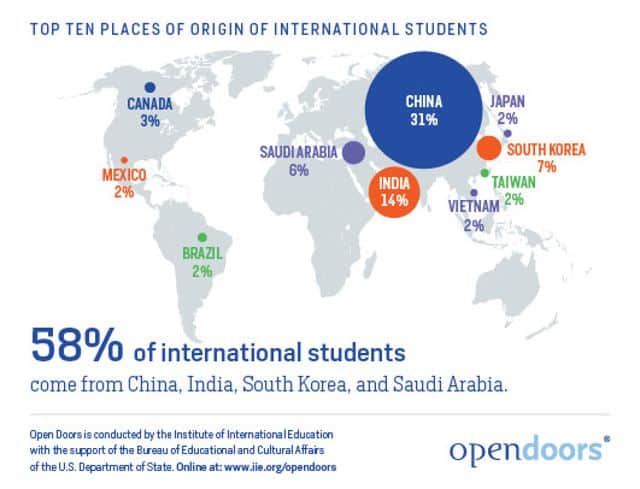

Adapting Chinese Recruitment Strategies to Emerging Trends
Understanding emerging geopolitical, demographic, and economic trends in key markets can help schools adapt their recruitment strategies appropriately. China is currently the world’s largest trading nation, responsible for one-third of global growth in the past decade. During this time, households earning over $35,000 increased from 6 million to 27 million. According to last year’s Hurun Report, the number of Chinese billionaires jumped an incredible 70% over the previous year.
At the same time, many analysts in China warn that debt is rising twice as fast as growth in the country, which could suggest an impending economic slowdown. Devaluations in the Chinese stock market and currency during the last few years signal questionable stability in 2017, though drastic change seems unlikely.
Demographics is the more predictable change on the horizon. According to the United Nations Population Division, the number of Chinese people aged 18 to 23 is expected to decline by a fifth between 2015 and 2020, then stabilize until 2040 and drop another fifth by 2050. Rising wealth and the high value placed on foreign education have offset demographic declines. However, the growing strength of China’s higher education system, the mixed experiences of those returning from abroad, and potential political interference make the future uncertain.
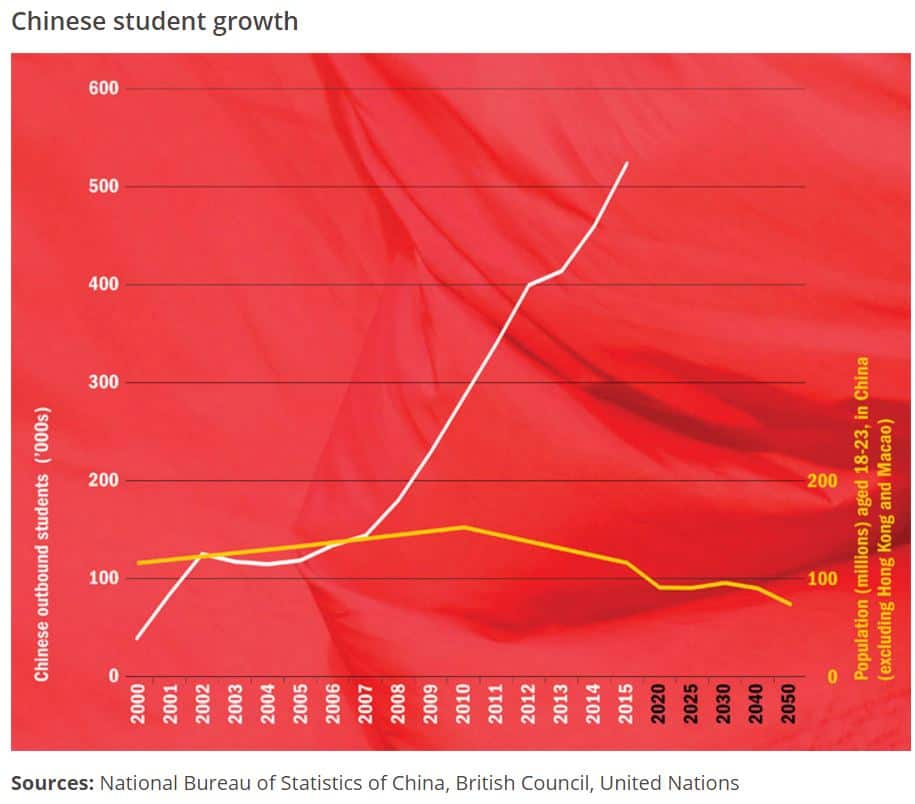
Significant investments in its higher education system appear to be paying off – it has the most improved system since 2013, according to the annual Universitas 21 ranking. Last year, Tsinghua University became the first Chinese institution to reach the top 20 in the influential Times Higher Education World Reputation Rankings, with Peking University close to number 21. A record nine Chinese universities made the top 100, demonstrating the nation’s increasing competitiveness on the world education stage. In 2016, China became the leading host for international branch campuses, and it opened its first overseas campus in Malaysia.
Analyzing the Perceived Value of Foreign Degrees for Chinese Prospects
Despite these internationalization trends, the perceived value of a foreign degree could be eroded by political rhetoric and diminishing returns of graduates returning home. Xi Jinping’s presidency has ushered in stricter authoritarianism, with reports surfacing of proposed bans on promoting “Western values” in textbooks and reduced English language preparatory curricula for studying abroad. US admissions officers are concerned that hostile relations with President Trump could have serious consequences to the benefit of countries like Canada, which has simplified access to visas, work, and permanent residency for international students.
The gap between the number of students going abroad and those returning home has narrowed in recent years. Still, the rapid increase in foreign degree-holders has forced more than 60% to take entry-level jobs, which a majority aren’t content with. This oversupply has led some to label these haigui (sea turtles returning to their place of birth) as haidai (seaweed), according to the Chinese economic magazine Caixin.

George Burke, who has been involved in international higher education for over 40 years, has noticed a troubling trend in institutions developing a short-term view of international admissions at the expense of true integration and sustainability:
“In the early years, international students were either key to scientific research or an added plus. However, few US universities have a comprehensive, integrated approach to international education and international students. For many schools, it has become a way to offset declining US domestic high school populations and balance their budgets; the importance of integration and diversity is lost. Recruitment is to meet enrollment and economic goals.”
Challenges with the Integration of Chinese Students
The lure of Chinese revenue has resulted in differentiated tuition rates and, according to higher ed consultant Rahul Choudaha, “a whole industry of test prep, admissions consulting, and recruitment agents” designed to “package” applications so they’re admissible to universities. A study by Zinch China estimated that 90% of Chinese university applicants forged recommendations, 70% submitted personal essays written by others, and 50% forged their high-school academic transcripts.
The most conspicuous example of this type of careless recruitment has been found in South Korea, where Chinese students represent most of the international student body at most universities. The education ministry has pushed for maximum foreign student intake without ensuring adequate quality assurance. Insufficient admission standards and student support services have led to high dropout rates, grudges against these irresponsible policies, and even anti-Korean sentiment.
Chinese students often arrive in the West lacking appropriate English levels and with completely different communication styles and cultural assumptions. Reports of outstanding Chinese students struggling in American universities have attracted widespread anxiety in China, where schooling abroad is a significant investment. Most Chinese students abroad spend an average of $200,000 for just tuition and fees in the US over 4 years, not counting the thousands for accommodation, TOEFL and SAT classes, international secondary schools for American curriculum, and round-trip flights.

Strategies for Student Integration and Retention
While some institutions are moving to diversify their international student body beyond dependence on China, others are improving their recruitment and retention practices, integration, and career preparation. Sustainable international enrollment requires a holistic view of the student experience and the prioritization of reliable outcome metrics above the focus on inputs (number of students).
Establishing the essential infrastructure of orientation, support services, and faculty training to integrate Chinese students could include the following:
- Addressing typical adjustment challenges in redesigned orientation programs
- Developing connections to local student “ambassadors” for initial settling in and bilingual counsellors for ongoing concerns
- Providing cross-cultural training for faculty, academic advisors, staff, and students
- Establishing dedicated language support services
- Tracking student performance to address potential issues proactively
The University of Delaware is one of many schools that accept students based on academic credentials and the condition that they meet language requirements through co-curricular “cohort” programs. In small multicultural groups, students expand their linguistic confidence and cultural engagement through experiential learning, community service, and reflective writing. Effectively assimilating Chinese students on campus is no small challenge. Still, schools that do create these support services and opportunities for interaction can yield greater retention, student success, and positive word-of-mouth, which will encourage a steadier flow of Chinese students in the longer term.
Example: Many colleges and universities establish conditional acceptance agreements with ESL language schools like English Studies Institute to develop the necessary communication and social skills for success.

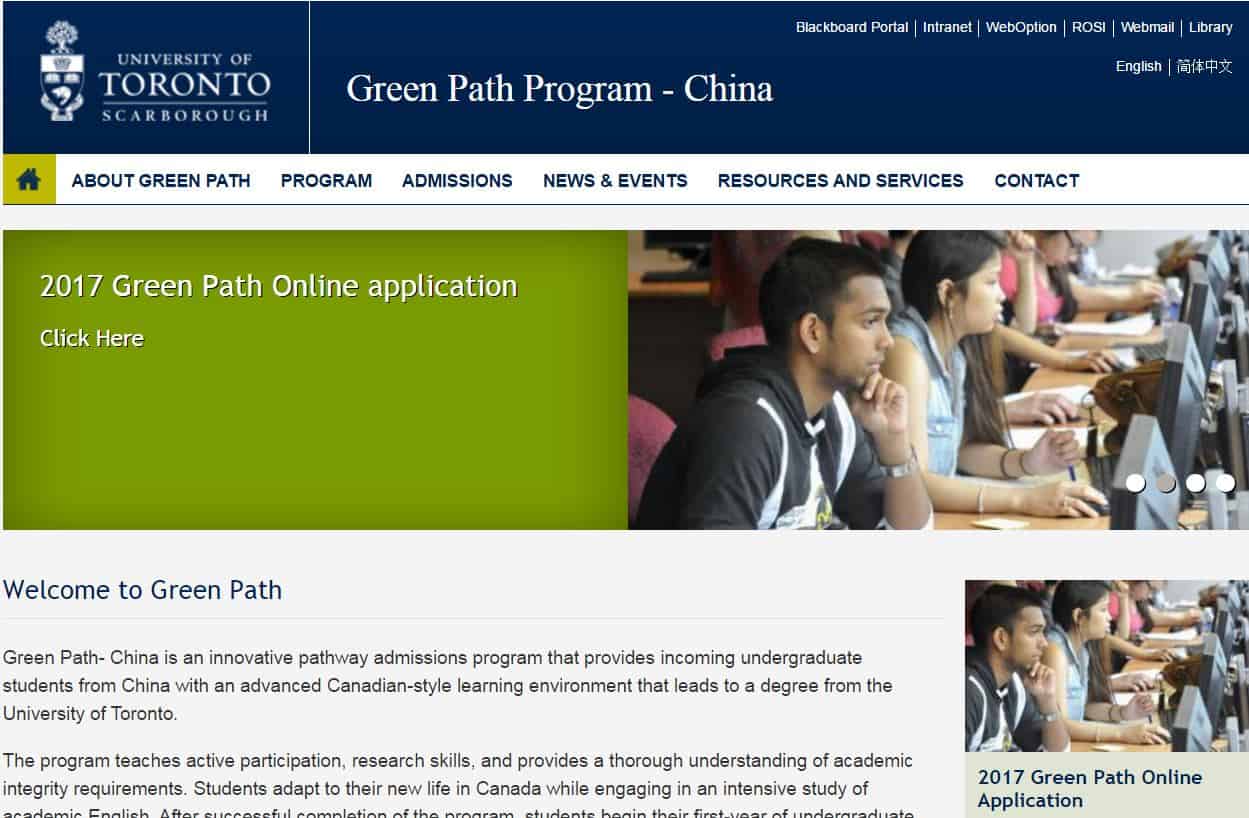
Expanding Opportunities for Student Recruitment in China
Despite the many cautionary signs and persistent challenges, China remains enormously important for student recruitment, with many untapped regions existing in smaller cities, a wealth of scholarship opportunities, and growing interest in new segments. A diversifying economy and burgeoning middle class is increasingly seeing the value of educational pursuits of personal interest besides the traditionally popular STEM and business subjects. Schools could emphasize the wide range of majors offered in studies abroad, recognizing that Chinese students have greater choices in their education.
In the past few years, arts-focused Falmouth University has greatly increased its recruitment efforts in China and doubled its application intake this year. Applicants and their families express that they see “huge scope” for the creative industries to “sustain a very credible career,” says senior deputy vice-chancellor Geoff Smith.
Career colleges have also been largely neglected in the past because, in China,, they are the only option for particularly poor performance on the gaokao, a much-dreaded standardized exam that’s a pre-requisite for higher education in the country. At the China Education Expo in Beijing, recruiters like Yan Wu of Sheridan College share personal stories about how work experience and applied communication skills acquired through a college education “are the best fit when students are new to Canada.”
College recruiters may have an uphill battle when convincing parents. Still, they can explain that college tends to be a quicker route to a job needed for permanent resident status in Canada, and credits can count towards a university degree. More and more students choose to complete their first postsecondary years at more affordable college options and then transfer to a university for the desired degree.
Example: Conestoga College’s website offers customized content for Chinese applicants and their families and has agreements with higher education institutions in China. It also offers a growing number of international exchange opportunities for students and faculty, signifying long-term relationship-building with China and other nations.
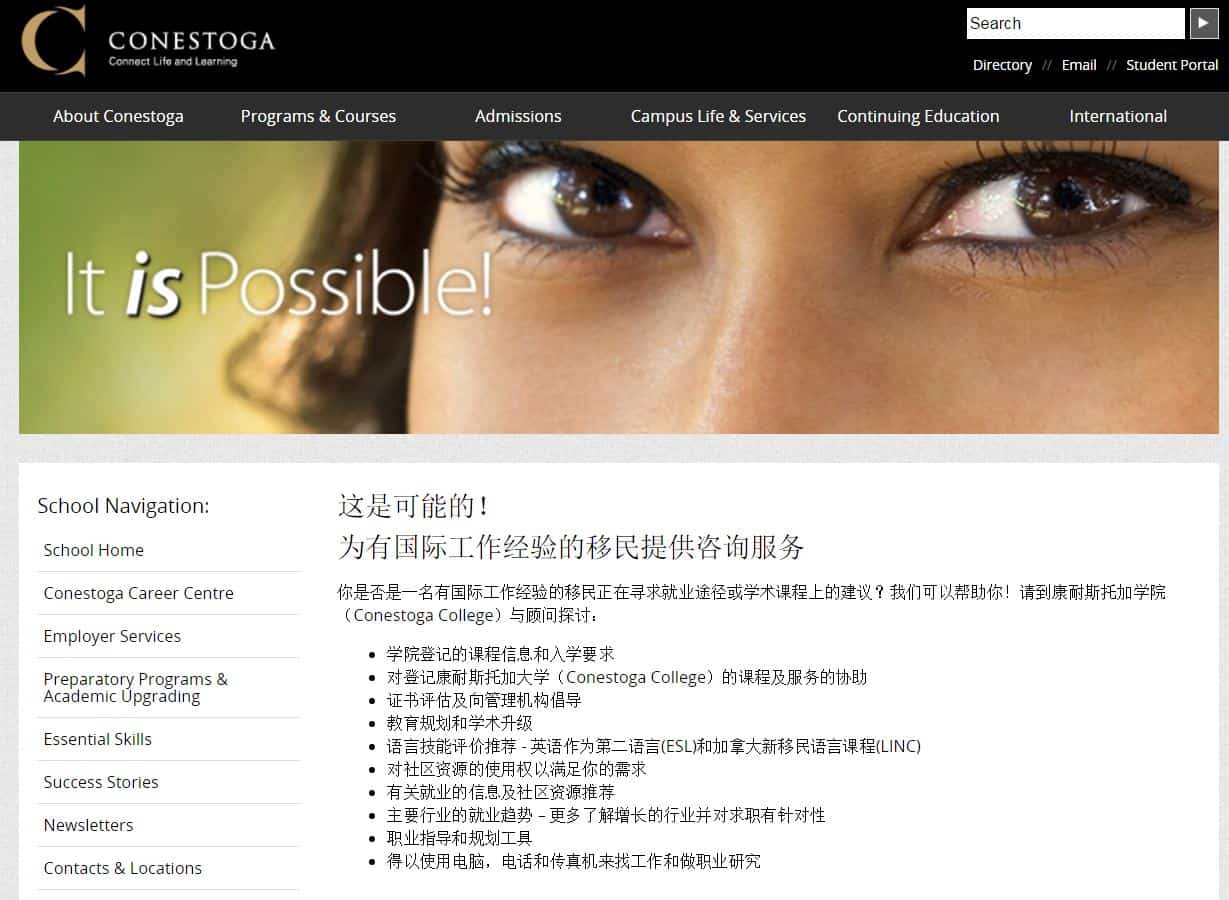
Recommendations for Expanding Chinese Student Recruitment
An effective international recruitment strategy should begin with an honest and thorough examination of present and past activities. To develop potential paths forward, consult admissions and analytics data, Chinese students and alumni, and other internal resources. Look for ways to shift resources towards growth areas, considering emerging geopolitical and economic trends and your school’s unique offerings that might appeal to prospects in China.
A well-conceived and comprehensive digital marketing strategy demonstrably delivers the best possible Return on Investment (ROI). Still, it can be taken even further with a Chinese-speaking admissions administrator with a good knowledge of the market and online and social media trends. Some schools complement their efforts by employing agents, but adequate oversight is necessary to ensure they act in your best interests. Correlate your Chinese students’ academic performance and experiences with their sending agencies to help determine who to continue relationships with.
It’s estimated that 10,000 registered and unregistered student recruitment agents operate throughout China, with the three largest agencies accounting for about 30% of the market. As their channels and connections mature with increasing demand, they become increasingly expensive. There is also the question of finding reliable quality.
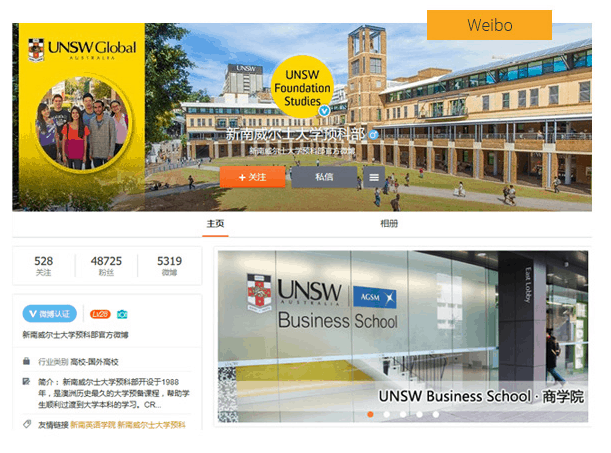
While agents can play a persuasive role in decision-making for families with little knowledge of study abroad options, increasingly informed prospective students may use their opinions merely as references or are more likely to assist with applications and student visas. Online information continues to gain importance in supplementing or replacing agent input, with more and more students/families enrolling directly via a school’s digital resources.
Tailoring Digital Marketing Messaging for Chinese Prospects
Most schools now have dedicated sections of their website for international students, including many with well-crafted Mandarin content specifically for Chinese prospects. Aim to improve these sections continuously according to the latest marketing research, focusing your messaging by keeping in mind the primary concerns of Chinese families. As parents play a major role in school choice, future career opportunities, and employment outcomes tend to be the first questions asked, so be sure to include reliable evidence based on current data.
Rankings or other indicators of education quality can be powerful persuasion, and families will also want assurance about the safety of their campus, city, and country. Other popular elements include information about Chinese student groups and clubs, co-op opportunities, restaurants and grocery options, climate, transportation, and general campus life – videos are helpful explanation tools. Specific advice about registration, checking in for housing, and arriving from the airport will be appreciated. Schools like McGill University have PDF viewbooks created especially for Chinese prospects.
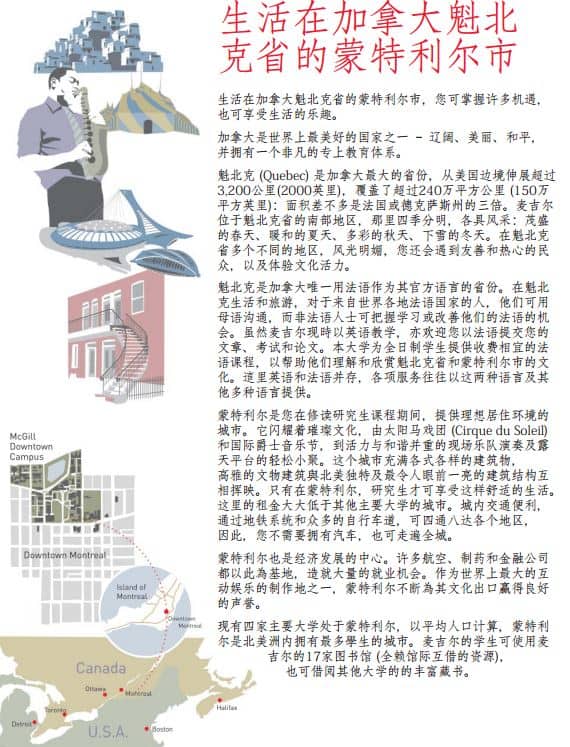
Accessing Chinese Prospects Through WeChat
The most ubiquitous site for Chinese student prospects is WeChat, which has functions similar to Facebook and WhatsApp but also includes private groups, video and phone calls, and monetary transactions. For higher education marketing, besides being a platform for consistent content sharing to expand your organic reach, it offers opportunities for one-to-one communication, advertising, and even in-app tuition payments. You can tailor advertising to specific demographics with increasing options for in-feed placements (in a ‘Moments’ feature, similar to Facebook), directing prospects to a dedicated Chinese microsite, or a landing page that triggers an email drip marketing campaign.
Worth investigating are user groups or channels formed around particular interests, such as Circle of Moms (WeChat ID: USAmamaquan), which had 150,000 followers as of August 2016. This group consists mostly of mothers in tier 1 cities seeking American education opportunities for their children. Joining groups like this or targeting with advertising directed to a parental audience is a great way to develop awareness and interest in your school. Institutions like the Naveen Jindal School of Management use WeChat to connect with alumni who have returned to China.

Improving Return on Investment in International Digital Marketing
With so many possible regions and marketing initiatives to pursue, a nuanced approach to measuring ROI is important to ensure your recruitment efforts justify the allocated resources. Rather than just counting the number of applications or enrollments, attempt to measure both hard and soft returns, such as brand awareness and reputation, understanding the nature of varied inputs at multiple points along the student recruitment funnel.

HEM recently launched a comprehensive suite of customizable Chinese digital marketing packages for schools actively seeking to navigate this unfamiliar market with data-driven initiatives. Available services include:
- Creating and managing your microsite, including full CMS setup and .cn domain name registration, up to 15 pages of fully translated content, keyword research, and on-page Baidu optimization
- Web analytics implementation for the Chinese market, including configuration, Baidu setup and tools, monthly KPI reporting, optional A/B testing, and ongoing recommendations for improvement
- Geo-targeted Chinese language Pay-per-click lead generation
- Full-service inbound marketing with detailed persona development and targeting, regular blogs in Mandarin, WeChat account setup, and ongoing social media marketing and support on several platforms

China is a fascinating market full of both immense potential and uncertainty. Attracting a small proportion of the half million students studying abroad yearly can significantly improve enrollment and campus diversity. The better you understand the intricacies of Chinese student recruitment and retention, the better you can create a sustainable enrollment strategy with measurable progress toward your school’s goals.
FAQ To Consider
How can Chinese educational institutions measure the success of sustainable recruitment strategies?
An effective international recruitment strategy should begin with an honest and thorough examination of present and past activities. To develop potential paths forward, consult admissions and analytics data, Chinese students and alumni, and other internal resources.






